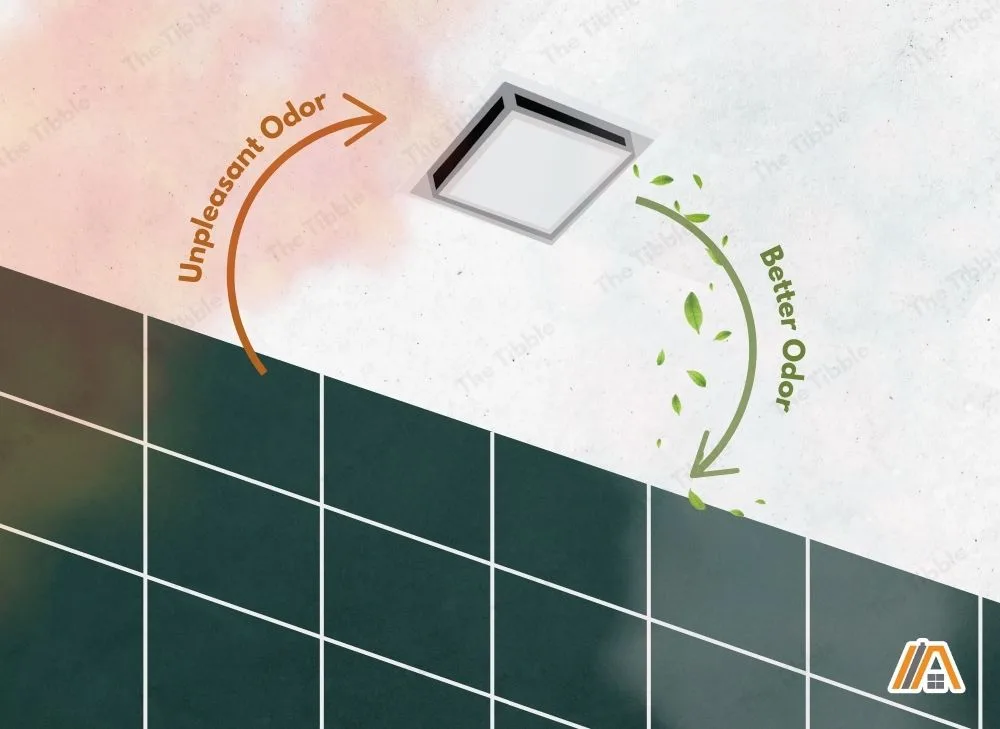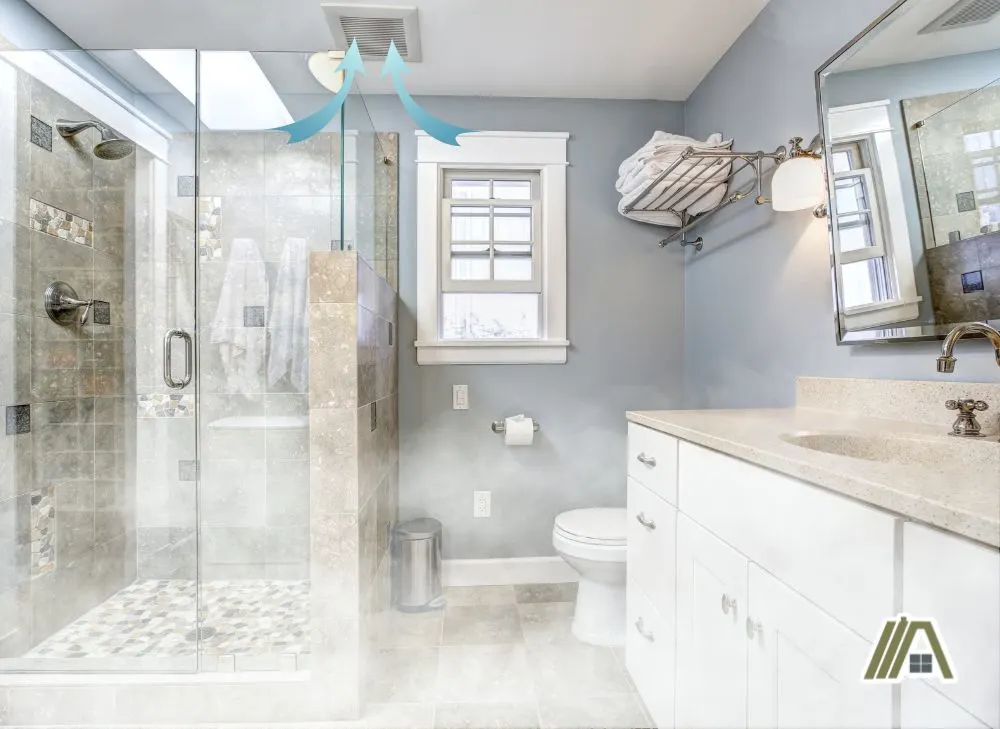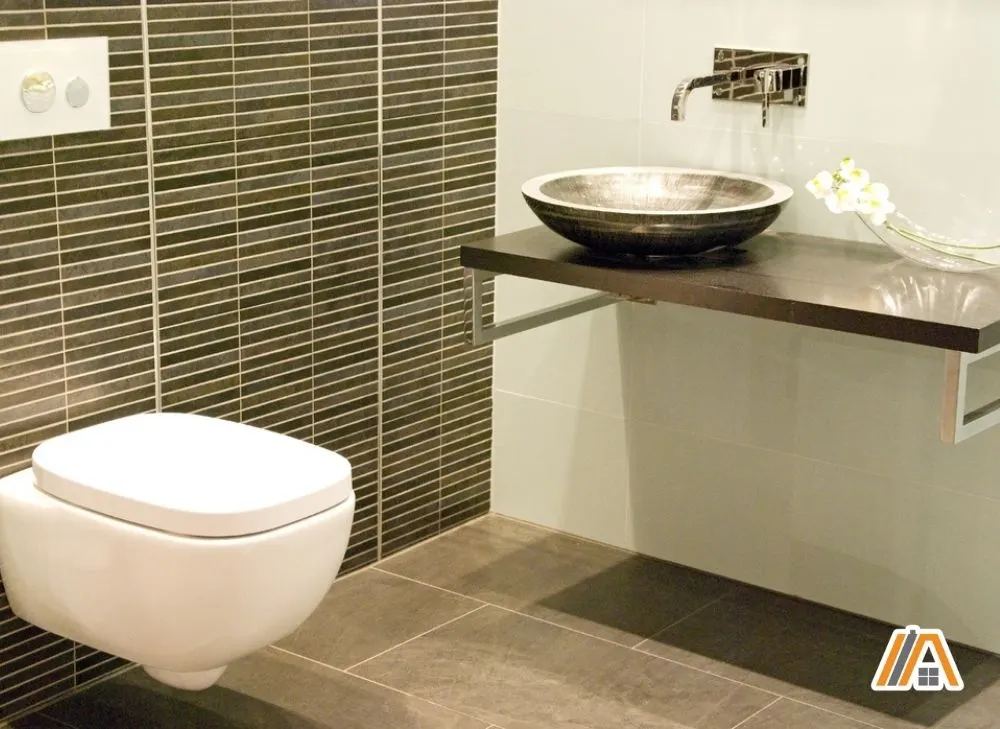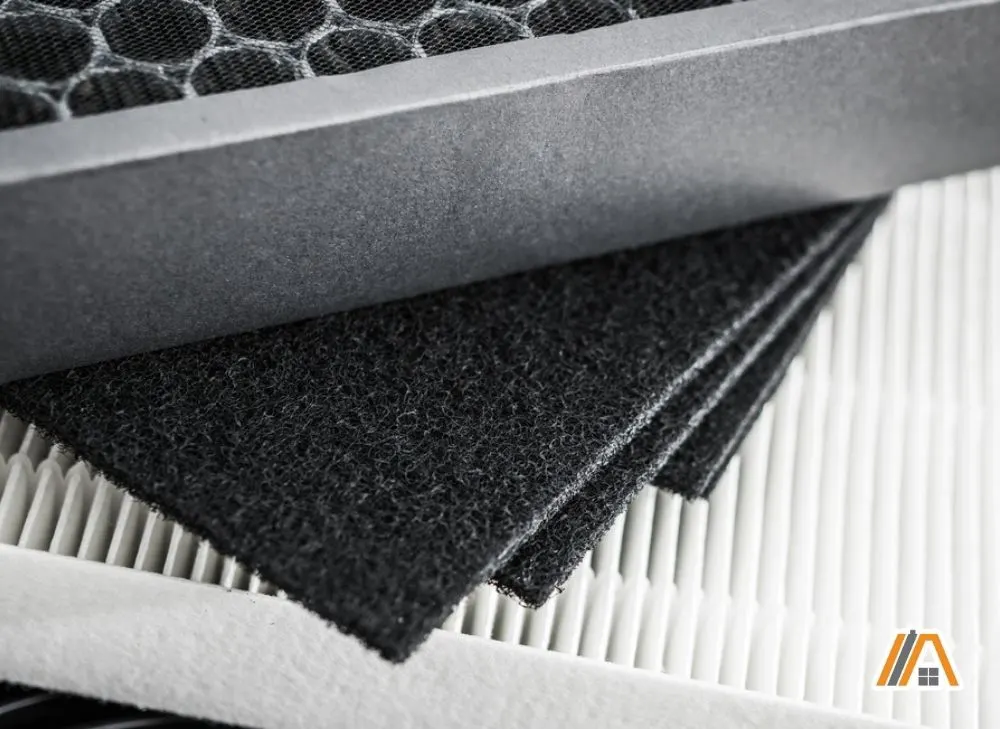Under some circumstances, running an exhaust system out of the building is difficult or impossible, so being marketed a ductless bathroom fan can be very alluring. However, if you are looking to meet the ventilation code requirements in this way, you will be disappointed.
Ductless bathroom fans are closer in function to air purifiers than they are to ventilation systems. They are unable to provide you with the ventilation required to prevent all manner of moisture-related problems in the bathroom. However, they can be helpful for non-ventilation purposes.

Ductless bathroom fans are good at their intended purpose of mitigating odors. Ductless bathroom fans are quiet and energy-efficient solutions but they will not remove moisture. Since ductless fans do not remove moisure, they should never be used in rooms containing showers or bathtubs.
Do Ductless Bathroom Fans Remove Moisture?
The point of bathroom ventilation is to remove the vast quantities of moisture produced during use before this moisture can wreak havoc in your bathroom.
Ductless bathroom fans do not remove moisture. They circulate the bathroom air through an activated charcoal filter to remove gas particles and odors.

The only way to remove moisture is to vent it outside or use a dehumidifier to collect it in a container (but dehumidifiers do not qualify as ventilation either).
Are Bathroom Fans Necessary (find out how they could save you thousands)
To remove moisture you need a proper mechanical exhaust ventilation system. The most common and, therefore, accessible option is a ducted bathroom fan. I have written an easy 6 step guide to finding the correct bathroom fan for you.
Ductless models are intended for rooms without showers or bathtubs where there is no need for ventilation.
Why Moisture Removal Is Necessary
There is a reason why bathroom ventilation is mandated by the powers controlling building design and construction.
Built-up moisture can cause serious damage to wood, wallpaper, and other items inside the bathroom if left unchecked. This could mean spending money to repair these items more often than you would have needed to if the room had proper ventilation.
Worse, however, is the potential for mold and bacteria to grow in the bathroom, causing respiration issues, allergic reactions, and other potential illnesses just through using the affected room.
Excessive moisture can even make its way beyond the superficial surfaces in a bathroom and weaken rafters and joints, creating serious structural issues over time.
When trying to remove moisture from a room, the best way to naturally achieve ventilation is to open a window and a door as far from the window as possible to create a cross breeze. However, in a bathroom, this method eliminates privacy, which is not optional for almost everyone.
For more information on why bathroom ventilation is necessary, you can visit my article on why not having it is so terrible.
Ductless Bathroom Fan For Shower
A ductless bathroom fan should never be installed in a shower cubicle. Putting it closer to the source of the steam will not make it any more effective.
As we discussed earlier, they do not remove moisture. You can run it while you shower, but you will not see any noticeable difference in the amount of steam lingering in your bathroom.
This means that they are useless when installed in a shower cabinet/corner.
Showers Need Ventilation
What Is Ventilation?
Ventilation is the removal of “old” and stale air from a room and the provision of “new” and “clean” air to a room or building. The fresh air supplied to the room comes from outside.
It’s important to properly ventilate a bathroom.
Thus, the ventilation needed for bathrooms and showers is intentional. You are purposely ensuring that there is a fresh supply of air to the room, while the old air is removed from the room.
Why Is It Important?
Having good ventilation is important to maintain good air quality within your house. Ventilation gets rid of odors, dust, moisture, and pollutants in your home. Then this “dirty” air is replaced with cleaner air.
In bathrooms with bathtubs and showers, ventilation is important as it also serves the essential function of removing steam and heat from the room.

When there are high levels of humidity and condensation in a bathroom, it encourages mold and mildew to grow, and the moisture can cause structural damage in your home. It can also ruin the bathroom fittings and fixtures.
As a shower is the source of this moisture, it is the shower that requires the ventilation.
Who Says It Is Required?
The International Residential Code (IRC), an organization that aims to provide home and building regulations for health and safety purposes, requires proper ventilation.
Habitable rooms must be ventilated properly through an approved opening to outside.
According to Section R303.3, bathrooms (and similar rooms) are required to have natural ventilation provided by a window (at least 3 ft2 for the transparent part) that can open to at least halfway.
Don’t mistake the bathroom described in this section for being only a toilet room. Section R202 of the IRC defines bathrooms as a room containing a bathtub or shower as well.
Exhaust Fans Ventilate Where Windows Aren’t Enough
Alternatively, if you cannot achieve sufficient natural ventilation, there needs to be an exhaust system (mechanical ventilation) for the bathroom that direct-vents to outside. This must comply with Section M1505 of the IRC.
Any exhaust system you install in a bathroom (of any sort) must be listed as able to provide 50 CFM intermittent or 20 CFM continuous exhaust rates (the minimum airflow) under ANSI/AMCA 210-ANSI/ASHRAE 51 ratings. These regulations can be found in Sections M1505.3 and M1505.4.4.
This means that your bathroom exhaust fan is an approved appliance for mechanical ventilation that can offer sufficient ventilation to the room.
The exhaust system in your bathroom must vent outside, as no air from bathrooms and toilets is permitted to be recirculated or discharged within the house, as per Section M1505.2.
This is what excludes ductless bathroom fans from this job.
Best Option When Ductwork Is Impossible
If your bathroom has an exterior wall you can avoid installing ducts in the attic by installing a through-wall bathroom fan.
They are relatively rare in North America, but some can be found on Amazon. Be aware though, most are very loud. The Panasonic FV-08WQ1 WhisperWall Bathroom Fan (amazon link) is the only one I found that was reasonably quiet.
If your bathroom does not have an external wall and there is no ideal room for ducting, then you will have to contract a ventilation specialist to help you come up with a tailor-made scheme to properly ventilate your bathroom.
In the meantime, you can look into the temporary and additional measures set out in my article Tips to Keep Bathroom Dry Without a Fan.
What Is the Point of a Ductless Bathroom Fan?
If ductless bathroom fans don’t ventilate like their ducted counterparts, then what is the point of them?
Their primary purpose is to eliminate odors.
Now, a vented bathroom fan will also do this job, so you don’t need both in the bathroom.
But, as I mentioned earlier, if you have a half-bath, powder room, or whatever you call a room with a toilet and basin but no bath or shower, then you can use a ductless fan for odor control instead of installing a ducted unit.

And it’s not just bathrooms that can benefit from odor control and air filtering. Units like the Broan-Nutone 682 Duct-Free Ventilation Fan (amazon link) work great for closets and pantries.
Here are 8 alternative ways to keep your bathroom smelling fresh
How Does a Ductless Bathroom Vent Work
Ductless fans use a fan to pull air into the unit and circulate it through an activated charcoal filter, which will trap some of the contaminants before releasing the cleaner air back into the bathroom.

Activated charcoal works by absorbing gases and odors. Activated charcoal is incredibly porous, and these pores are where the gasses and odors are trapped.
This does mean that the filters can fill up as it were. Charcoal filters have long lifespans and are incredibly easy to replace. However, excessive moisture can compromise them by wetting the charcoal.
Conclusion
Ductless bathroom fans are good at absorbing odors and other particulates and certain gases from the air but don’t do much in the ways of helping to remove moisture from the air, so they are not a viable ventilation option.
Since ventilation is so important in a bathroom with a bath or shower, you can only use ductless bathroom fans successfully in half-baths that only have a toilet and sink.

